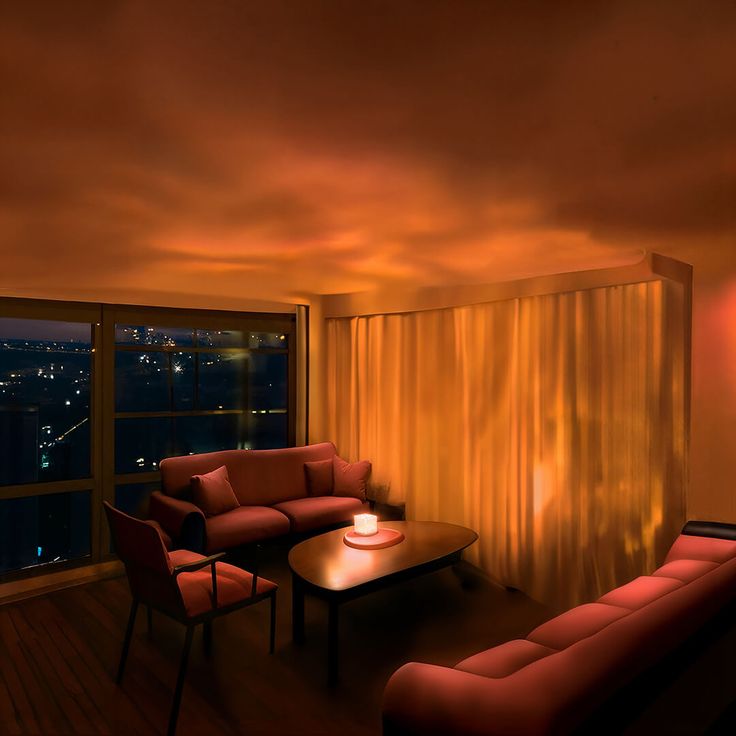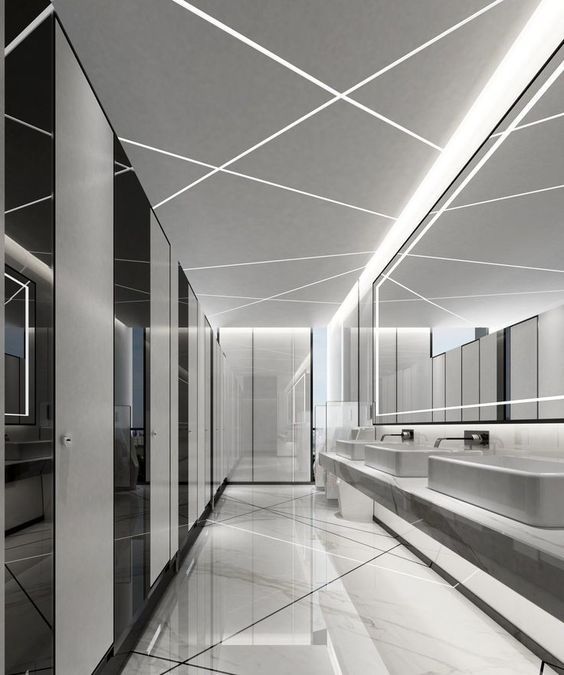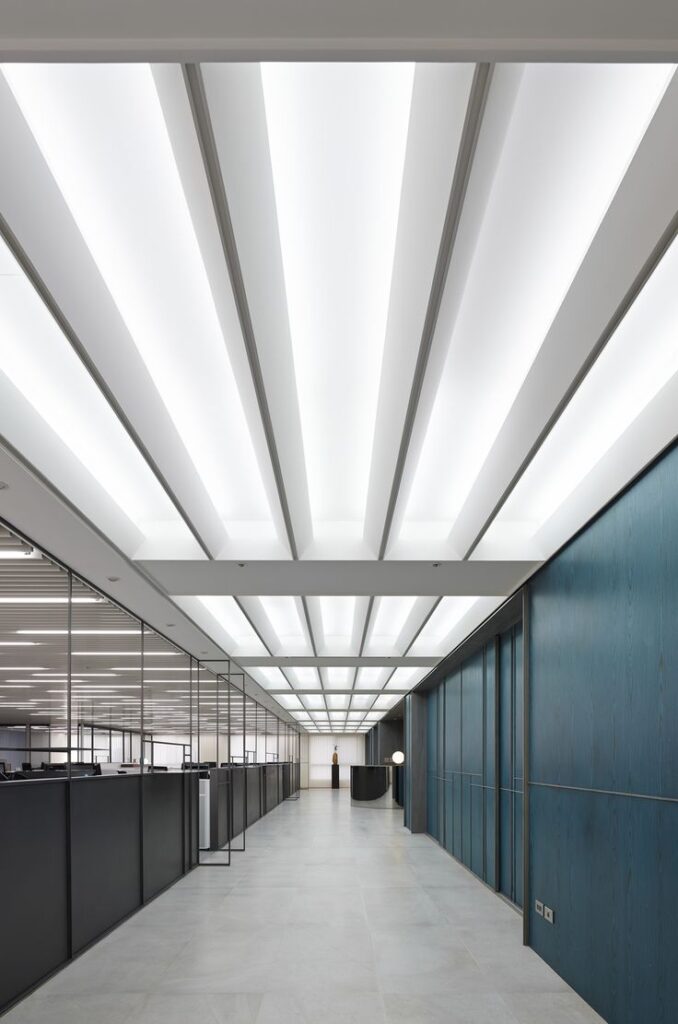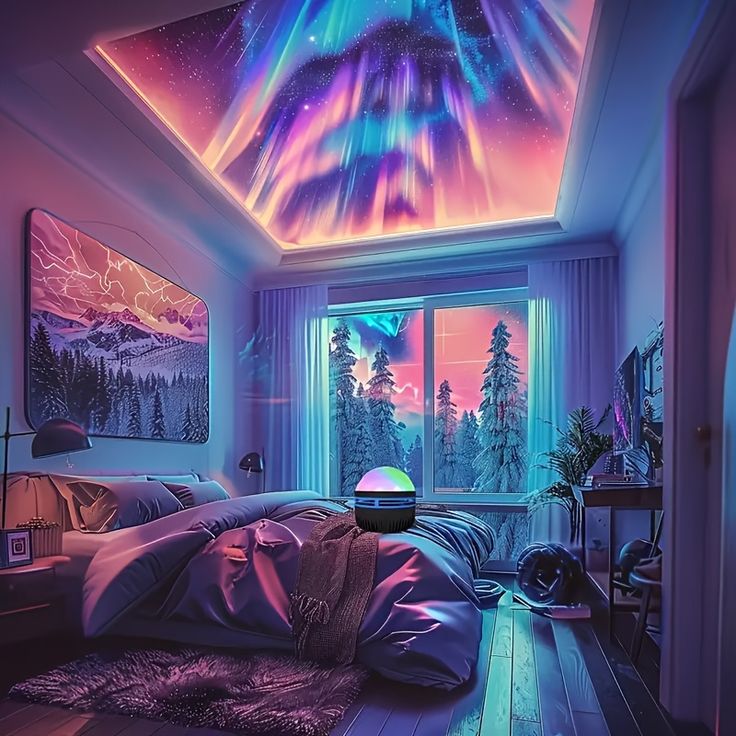General lighting refers to the general and uniform lighting of a space, the purpose of which is to provide sufficient illumination for viewing and performing daily activities in the environment. This type of lighting is typically used in public, office, residential and commercial spaces and requires creating sufficient light throughout the space without creating harsh shadows or special lighting. General lighting should be designed in a way that illuminates all parts of an environment equally and provides a sense of comfort and safety for the people present in the space. The use of various lamps and equipment such as ceiling lights, fluorescent lamps or LEDs is usually suitable for this type of lighting. Also, adjusting the intensity of light and its distribution in the space is of particular importance in order to both use energy optimally and create a visually balanced environment.
Lighting in Public Environments
Lighting in public environments plays a very important role in the comfort, safety and experience of users. In these spaces, lighting is designed to meet the different needs of people and provide a pleasant and user-friendly environment. Lighting is important not only for better visibility, but also for creating atmosphere and influencing people’s mood. Here are some key aspects of lighting in public environments:
1. Safety and accessibility
Proper lighting in public environments, such as streets, parks, transport stations and shopping malls, is essential for people’s safety. Sufficient lighting at night or in dimly lit spaces helps people move around easily and prevents potential hazards such as falling or colliding with obstacles.
2. Mood
Lighting can have a great impact on people’s mood in public spaces. For example, warm, soft lighting in restaurants and coffee shops can create a sense of comfort and relaxation, while cool, bright lighting in hospitals or business centers can enhance a sense of energy and activity.
3. Highlighting specific points
In many public environments, lighting can help highlight specific parts of the space. These points may include entrances, signposts, artwork, or parts of the architectural design that need more attention. For example, accent lighting is used in shopping malls or exhibitions to draw attention to products or decor.
4. Guidance and direction
In large public environments, such as airports, train stations, and shopping malls, lighting can play a guiding and guiding role. For example, bright signs, guide lights, and adjustable lamps help people identify the right paths and easily reach their destinations.
5. Energy Saving
In public spaces, especially in large spaces, it is important to use smart and energy-efficient lighting systems. Using LED lamps and automatic systems that adjust the intensity of light based on the presence of people can help reduce energy consumption while providing a bright and efficient environment.
6. Different periods of day and night
In public spaces that are used during the day and night, lighting should be appropriate for each time period. During the day, natural light is mainly used, but at night or in spaces that lack natural light, artificial lighting should be used to meet lighting needs. Adjusting lighting during the night can help reduce costs and improve the user experience.

Features and Benefits of LED for Public Spaces
1. Energy Saving
Due to their high efficiency in converting energy into light, LED lamps are much more energy efficient than other types of lamps (such as incandescent or fluorescent lamps). This feature reduces energy costs in public spaces.
2. Long Lifespan
LED lamps have a longer lifespan than traditional lamps. This means reduced lamp replacement costs and less maintenance required in public spaces. LEDs typically have a lifespan of between 25,000 and 50,000 hours.
3. Various Lighting Settings
LED technology has the ability to adjust light with different colors and intensities. In public spaces such as restaurants, hotels, shopping malls and other environments, it allows lighting to be adjusted to suit the specific needs of each space or time of day or night.
4. Diverse and attractive colors
LED lamps can provide light in a wide range of colors, which helps with creative lighting in public spaces. This feature is especially useful in spaces that require decorative lighting (such as hotels, stores, and showrooms).
5. No infrared and ultraviolet radiation
Unlike incandescent and fluorescent lamps, LEDs do not produce any infrared (IR) or ultraviolet (UV) radiation. This feature prevents the light from damaging sensitive objects and products in public spaces.
General Lighting Techniques
1. Uniform General Lighting
This type of lighting is used to provide general lighting in a space and its goal is to illuminate the environment evenly. This technique is used in spaces that require basic and general lighting, such as hallways, parking lots, lobbies, and waiting rooms.
Features:
Distribute light evenly throughout the space.
Avoid creating sharp shadows or dark areas.
Use ceiling lights or fluorescent lamps for general lighting.
2. Accent Lighting
Accent lighting is used to draw attention to specific points or features of a space, such as artwork, billboards, decorations, or architectural columns. This technique creates visual effects and focuses on details.
Features:
Create focal points in the space.
Use focused light such as spotlights or projectors.
Increase the attractiveness and beauty of the space.
3. Ambient Lighting
Ambient lighting is used to create a comfortable and pleasant atmosphere in the space. This type of lighting helps users feel comfortable and at ease by creating soft and uniform lighting. This technique is very important in spaces such as restaurants, hotels, cafes and shops.
Features:
Soft and indirect light.
Use of wall or ceiling lamps with low light intensity.
Create a sense of comfort and relaxation in the space.

 English
English العربية
العربية


















